Insect killing UV light machines are popular tools for controlling flying pests such as mosquitoes, flies, and moths. These devices utilize ultraviolet (UV) light to attract and eliminate insects efficiently and safely.
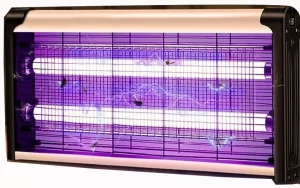
Working mechanism of Trapping and Killing pests and insects using UV Light machines
The UV lights insects killing machine use the following steps to attract pests and kill them.
1. Attraction to UV Light
- UV Light Emission: These machines are equipped with UV bulbs that emit light in the UV-A spectrum (320-400 nm). This range is particularly attractive to many flying insects, as it mimics natural light sources like the moon and stars, which insects use for navigation.
- Luring Mechanism: The UV light draws insects towards the machine. This is particularly effective at night or in darkened environments where the UV light is more visible and compelling.
2. Trapping Mechanism
- Sticky Pads/Traps: Some UV light machines have adhesive surfaces where insects get stuck upon contact. These sticky pads are often replaceable and need regular maintenance.
- Suction Fans: Other models use a fan to create a suction effect. As insects approach the light, they are pulled into a containment area by the airflow generated by the fan.
- Electric Grid: Many UV light machines are equipped with an electric grid or mesh. When insects fly towards the UV light, they come into contact with this grid and are electrocuted instantly.
The history of Florescent tubelights
3. Killing Mechanism
- Electrocution: The electric grid method is one of the most common and effective ways to kill insects. The grid is usually low voltage but high enough to kill small insects on contact.
- Dehydration: Insects trapped by sticky pads or in containment chambers eventually die due to dehydration. This method is slower compared to electrocution but is also effective.
Comparison : UV trap light machine vs other insect repellants
Insect control is essential for maintaining a comfortable and healthy living environment. UV trap light machines are one method, but there are various other insect repellents available. Here is the detailed comparison.
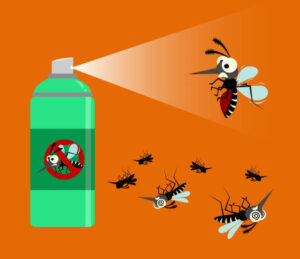
UV trap light machines and other insect repellents offer diverse approaches to insect control, each with unique advantages and drawbacks. UV trap light machines attract and eliminate flying insects like mosquitoes and flies using UV light and mechanisms such as sticky pads, suction fans, or electric grids. These devices are chemical-free, making them safe for indoor use and around food, but they may unintentionally kill beneficial insects and require regular maintenance, such as replacing UV bulbs and cleaning traps. Other insect repellents include chemical sprays, electronic repellents, natural repellents, and physical barriers. Chemical sprays are effective against a wide range of insects but pose health risks if inhaled or ingested and require frequent reapplication. Electronic repellents emit ultrasonic sound waves to deter insects, though their effectiveness is debated, and they may bother pets. Natural repellents, made from plant-based ingredients like citronella and eucalyptus, are safe and eco-friendly but may cause allergies or skin irritation and need frequent application. Physical barriers like mosquito nets and screens are highly effective and safe but are limited to specific areas. In terms of cost, UV trap light machines have moderate to high initial costs with ongoing maintenance expenses, while other repellents range from low to moderate costs, depending on the type and frequency of reapplication. Environmentally, UV trap light machines are more sustainable since they do not release harmful chemicals, whereas chemical sprays can contribute to pollution and harm non-target species.
Invention of UV Light insect killing machine
The invention of the UV light insect and pest-killing machine is attributed to William F. Folmer and Harrison L. Chapin, who designed the first electric insect trap in 1934. Their device, known as the “electronic insect killer,” utilized ultraviolet (UV) light to attract insects, which were then electrocuted upon contact with an electrified grid.
Types of Insect Killing UV Light machines
There are several types of UV light insect-killing machines available in the market, each designed to target specific types of insects and cater to different usage environments. Here are some of the common types:
1. Electric Grid UV Light Traps

These devices attract insects with UV light and then kill them using an electric grid or mesh. Ideal for Both indoor and outdoor use. Effective at killing insects quickly; low maintenance and May pose a minor risk of electric shock if not handled properly.
2. Sticky Pad UV Light Traps
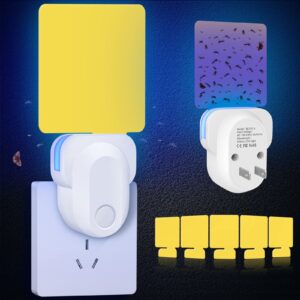
In this machine Insects are attracted to the UV light and then get stuck on adhesive pads or boards. Mainly ideal for Indoor use, especially in kitchens and food preparation areas.Good thing is that there is no risk of electric shock risk and fully quiet operation. One negative points is that Pads need regular replacement and less effective in high-infestation areas.
3. Fan-Based UV Light Traps
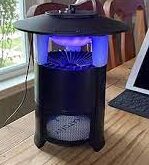
These traps use a fan to create a suction effect, drawing insects towards the UV light and into a containment chamber where they dehydrate and die. Ideal for Indoor use, particularly in homes and offices. Only the disadvantage is that it requires regular cleaning and maintenance.
4. Outdoor UV Light Traps
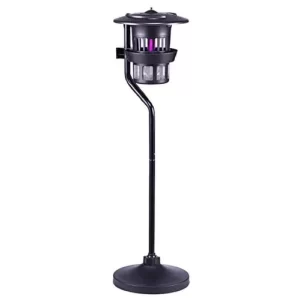
They are mainly Designed to withstand outdoor conditions. These traps use UV light and either electric grids or fans to capture and kill insects. Can be used in locations such as Gardens, patios, and outdoor events.They are Typically more expensive and require weather-resistant features.
5. Solar-Powered UV Light Traps

These traps use solar panels to power the UV light and trapping mechanism, making them eco-friendly and cost-effective in the long run. Best for Outdoor use in sunny areas. They are mainly dependent on sunlight may not be as powerful as electric models.
6. Portable UV Light Traps
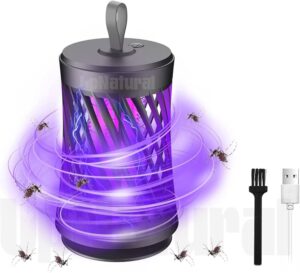
Portable UV light lamps are Compact and lightweight, and are mainly designed for easy transport and can be used in various locations such as camping, travel, and small indoor spaces. Limited coverage area, frequent recharging or battery replacement are the main disadvantages of this lamp.
7. Commercial-Grade UV Light Traps
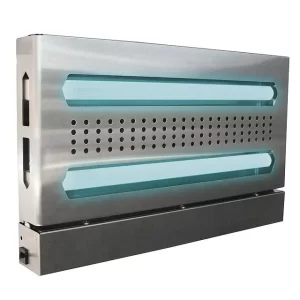
Commercial-Grade UV Light Traps are High-capacity traps designed for use in commercial settings such as restaurants, warehouses, and food processing plants. They are best for large indoor spaces with high insect activities.These lamps are Expensive and may require professional installation and maintenance.
Power Consumption Range
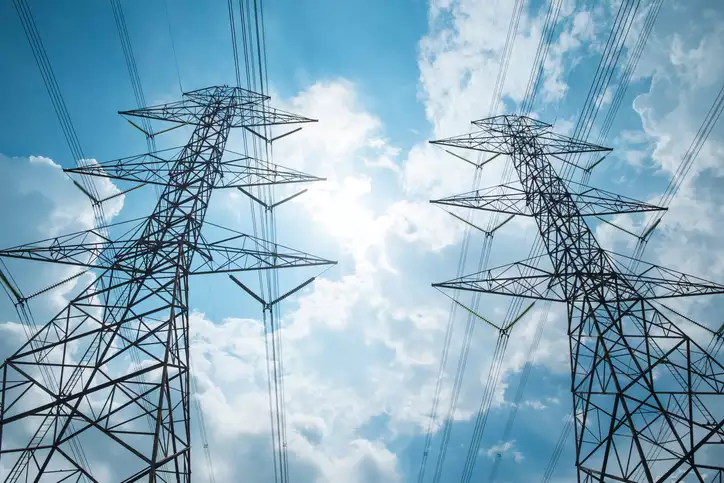
The power consumption of UV insect killer machines can vary widely depending on their size, design, and intended use. Here are some general ranges:
- Small Home Units: These typically consume around 5 to 20 watts. They are designed for small rooms or outdoor spaces and are usually portable.
- Medium Commercial Units: These can consume between 20 to 40 watts. They are intended for larger areas like patios, small shops, or offices.
- Large Industrial Units: These units may consume anywhere from 40 to 100 watts or more. They are designed for large outdoor areas, warehouses, or commercial kitchens.
Installation location of UV light insect killing machine

Installing a UV light insect killing machine at home is generally straightforward. Here’s a step-by-step guide on how to install UV light insect killer machine:
Materials Needed:
- UV light insect killing machine
- Mounting hardware (if provided)
- Screwdriver or drill
- Screws and anchors (if mounting on a wall)
- Extension cord (if necessary)
Steps to Install:
- Choose the Location:
- Select a location away from direct sunlight, as UV light is most effective in shaded areas.
- Ensure the area is not near food preparation or dining areas to avoid attracting insects to those spots.
- Place it at a height of about 5-7 feet from the ground for optimal performance.
- Keep it away from flammable materials and ensure it’s in a well-ventilated area.
- Mounting the Machine:
- Wall Mounting:
- Mark the spots for screws using the mounting bracket or holes on the machine as a template.
- Drill holes and insert wall anchors if needed.
- Screw the machine securely into place.
- Freestanding:
- If the unit is freestanding, place it on a stable, flat surface where it won’t be easily knocked over.
- Wall Mounting:
- Electrical Connection:
- Plug the machine into a nearby electrical outlet. Use an extension cord if the cable isn’t long enough, but ensure it’s rated for outdoor use if placed outside.
- Ensure the cord is secured and not a tripping hazard.
- Safety Check:
- Ensure the machine is securely mounted or placed.
- Check that the electrical connections are secure and the machine is functioning correctly.
- Make sure the UV bulb is installed properly (refer to the manufacturer’s instructions).
- Operation:
- Turn on the machine and let it run. Some machines have a timer or sensor; set these according to your preference.
- Regularly check and clean the machine as per the manufacturer’s instructions to maintain effectiveness.
Safety Features of UV Trap Lights (Safe to use or not for Humans)

UV light insect killing machines, also known as bug zappers or insect traps, are generally safe for humans when used according to their intended purpose. However, there are a few considerations:
UV Exposure: The UV light emitted by these machines is generally not harmful to humans in the short term, but prolonged exposure to UV rays can potentially cause skin damage, similar to prolonged sun exposure.
Electric Shock Hazard: Some bug zappers use an electric grid to electrocute insects. While these grids are designed to be safe for humans, there is a minor risk of electric shock if the unit is mishandled or improperly maintained.
Placement: It’s important to place bug zappers away from areas where people are likely to be in close proximity for extended periods, especially during outdoor activities or gatherings.
Maintenance: Regular cleaning and maintenance of bug zappers are necessary to ensure optimal performance and safety. Dead insects and debris should be cleared regularly to prevent contamination and maintain effectiveness.
Maintenance of UV Bug Zappers
Maintaining a UV light insect killing machine is essential for its effective operation and longevity. Here are some steps to ensure proper maintenance:

1. Turn Off and Unplug the Device
- Always ensure the device is turned off and unplugged from the power source before performing any maintenance. This prevents electric shock and ensures your safety.
2. Clean the Outer Surface
- Use a damp cloth to wipe down the outer casing of the machine. Avoid using harsh chemicals or abrasive materials that could damage the surface.
3. Empty the Insect Collection Tray
- Most UV insect killers have a collection tray for dead insects. Remove and empty this tray regularly, ideally once a week or more frequently if needed.
- Wash the tray with mild soap and water, dry it thoroughly before reinstalling.
4. Clean the Electric Grid
- If your device uses an electric grid to zap insects, ensure it is free from debris and dead insects. Use a small brush or a compressed air canister to gently clean the grid.
- Avoid using water or any liquid directly on the grid.
5. Check and Clean the UV Bulbs
- Dust and dirt can accumulate on the UV bulbs, reducing their effectiveness. Gently clean the bulbs with a soft, dry cloth. Avoid touching the bulbs with your bare hands, as oils from your skin can reduce their lifespan.
- If the bulbs appear dim or aren’t working, consider replacing them according to the manufacturer’s instructions.
6. Inspect for Damage
- Regularly inspect the machine for any signs of damage or wear, such as frayed wires, cracked casing, or broken components. Replace or repair any damaged parts promptly.
7. Replace Bulbs and Parts as Needed
- UV bulbs typically need replacement every 6 to 12 months, depending on usage and manufacturer recommendations. Follow the manufacturer’s guidelines for replacing bulbs and other parts.
- Use only manufacturer-recommended replacement parts to ensure compatibility and safety.
8. Store Properly When Not in Use
- If you plan to store the insect killer for an extended period, clean it thoroughly and store it in a dry, cool place. Cover it to prevent dust accumulation.
9. Follow Manufacturer’s Instructions
- Always refer to the user manual for specific maintenance instructions and safety guidelines provided by the manufacturer.
By following these maintenance steps, you can ensure your UV light insect killing machine remains effective and safe to use. Thanks for reading the article on “Insect Killing UV Trap lamps”.